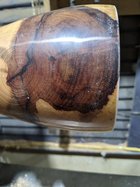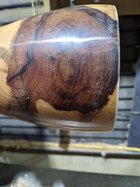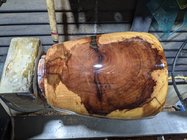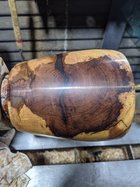rather than heating the epoxy you might consider learning how to do epoxy in a pressure pot. Pressure pot compresses any air in the resin eliminating the bubbles. You need to read up on your epoxy of choice and see if it is intended for Casting (which generally would need a pressure pot) or a deep pour (river tables and the like) or bartop (thick shiny surfacing) Go to the manufacturer's website and read carefully ALL of their instruction sheets on how to use each specific model/formulation that you are using.. The devil is in the details - Some require mixing by weight (which means *exact to the gram* weights - "close" ain't good enough) , others by volume - again exact measure would likely be important.. If you mixed an epoxy that needs precise measurements (weight or volume) and get one proportion wrong, you can end up with "pockets" - same if it is not completely and thoroughly mixed - you can get little pockets of unmixed part A resin that didn't get mixed with hardener which never cures, and when you turn it down you get little spatters of uncured stuff thrown at you.
I'd probably try and flush all the dust if any out with a bit of compressed air in a can (shop air can blow moisture and small particulate, invisible droplets of oil, etc) and wipe the surface down with a fast evaporating solvent compatible with the epoxy you are using, then mix another small batch very carefully and spread it on thinly with a clean putty knife or plastic scraper and let that cure, then sand again, in the hopes that the thin surface coating would fill all the tiny voids left from the air bubbles.. with any luck it might all bond together and your dust pockets disappear.. worst case, the dust pockets get sealed in, in which case you can always turn away a bit more and try sanding again until you get the finish you are after.




